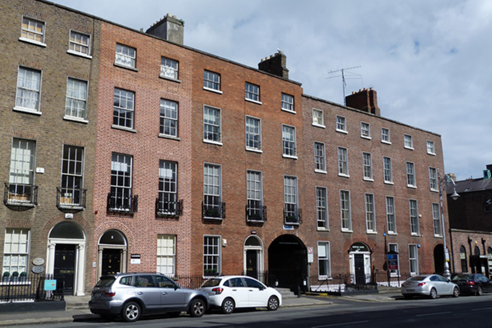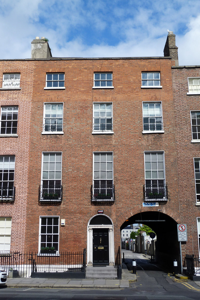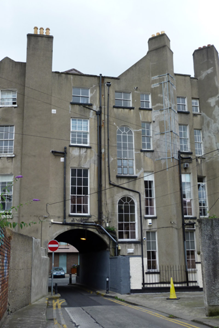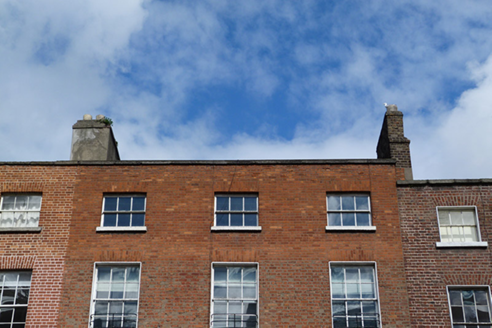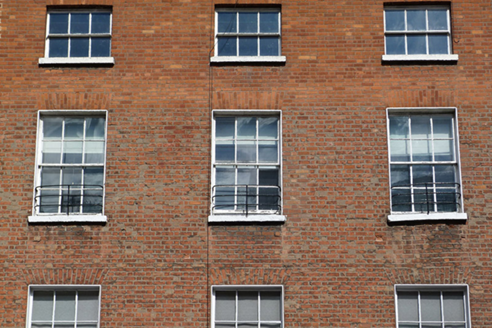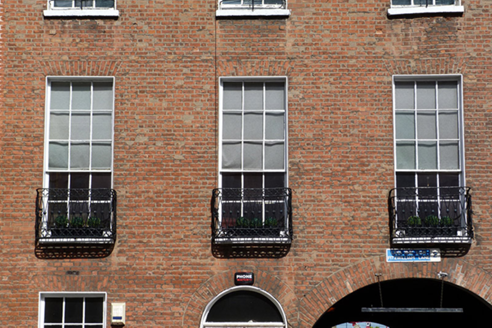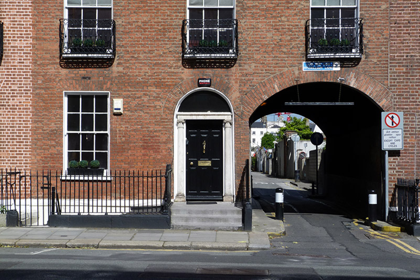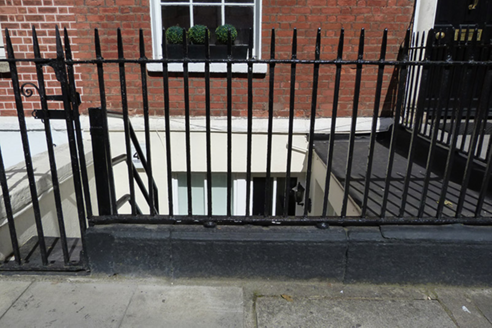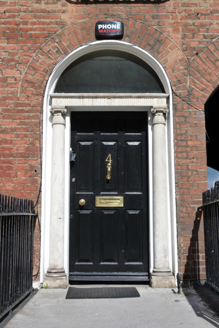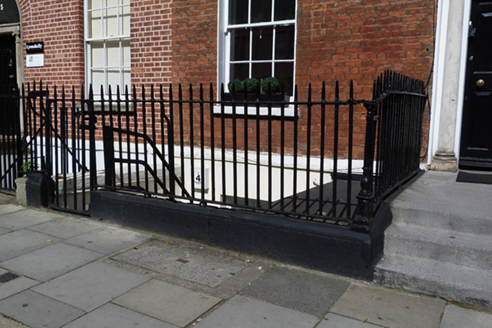Survey Data
Reg No
50100493
Rating
Regional
Categories of Special Interest
Architectural, Artistic
Original Use
House
In Use As
House
Date
1770 - 1800
Coordinates
316704, 233318
Date Recorded
03/07/2016
Date Updated
--/--/--
Description
Attached three-bay four-storey former house over basement, built c. 1780 likely as pair with No. 5, with integral carriage-arch. Now in use as offices. Pitched slate roofs, front span having two roofs with hipped inner ends, and rear having two roofs perpendicular to street, northern narrower and hipped and southern being hipped to east end and having gable to west. Refaced brick parapet with granite coping and parapet gutters. Rendered chimneystacks to south, angled chimneystack projecting to rear and shouldered red brick to north end, with variety of clay pots. Replacement uPVC downpipes to rear. Flemish bond red brick walling, rebuilt above second floor window head level, on painted granite plinth course over rendered basement walls; cement-rendered walls to rear elevation. Square-headed window openings, diminishing in height to upper floors, with raised rendered reveals and painted granite sills. Timber sliding sash windows, six-over-six pane to ground and second floors, nine-over-six pane to first floor and three-over-three pane to top floor, with cast-iron balconettes to first floor and wrought-iron window-guards to second floor. Rear elevation has two round-headed stairs windows, all window openings having rendered reveals and painted masonry sills; timber sliding sash windows, two-over-two pane to top floor, four-over-four pane to narrow bay, nine-over-six pane to first floor and one stairs window and six-over-six pane elsewhere and one recent casement insertion. Round-headed door opening with painted moulded render surround, limestone doorcase comprising moulded cornice and fluted frieze with rosettes, Ionic columns, plain fanlight and nine-panel timber door with brass furniture. Tarred platform and steps with cast-iron boot-scrape. Wrought-iron railings enclosing basement area with decorative cast-iron posts on painted moulded granite plinth. Recent window and door opening to basement level with flat-roofed extension beneath entrance platform. Segmental-headed carriage-arch has brick reveals and voussoirs, giving access to Fitzwilliam Lane. Rear of building has railings and pavement.
Appraisal
No. 4 Fitzwilliam Street forms part of a relatively intact group of late eighteenth and early nineteenth-century houses. The buildings maintain a similar roof-line and fenestration pattern, with individualism introduced through the design of doorcases and ironwork. The Ionic limestone doorcase of No. 4, in conjunction with the decorative wrought-ironwork to the balconettes and railings, represents the work of skilled artisans and contributes to the overall character of the building. Likely built as a pair with No. 5 to the south, No. 4 is relatively well-retained, with intact setting details and a carriage-arch throughway that leads to mews lanes to the rear. The building is an important component within this principal Georgian street. Developed as part of the Fitzwilliam estate, appears on Barker's map (1762) of Merrion Square, but the construction of houses did not begin until about 1780.
